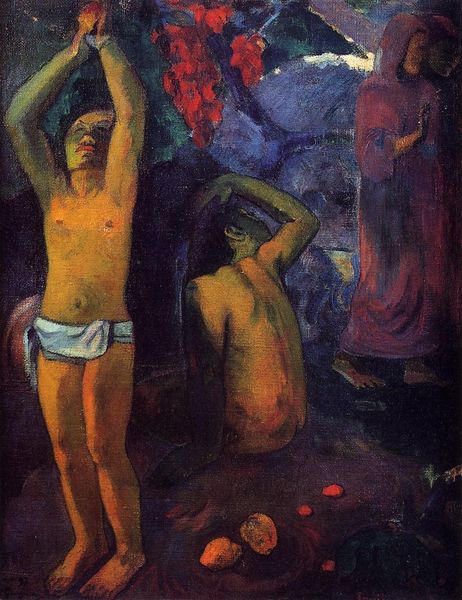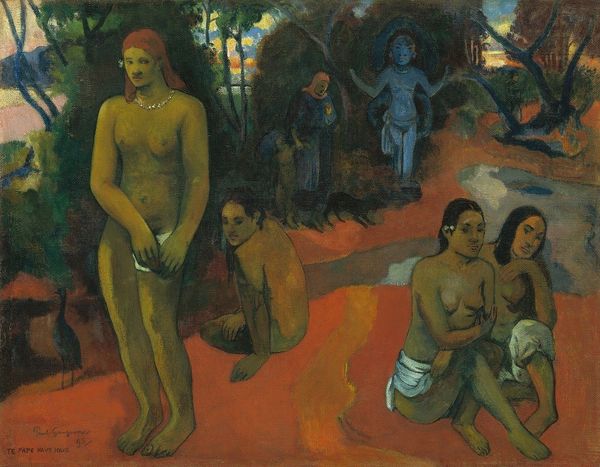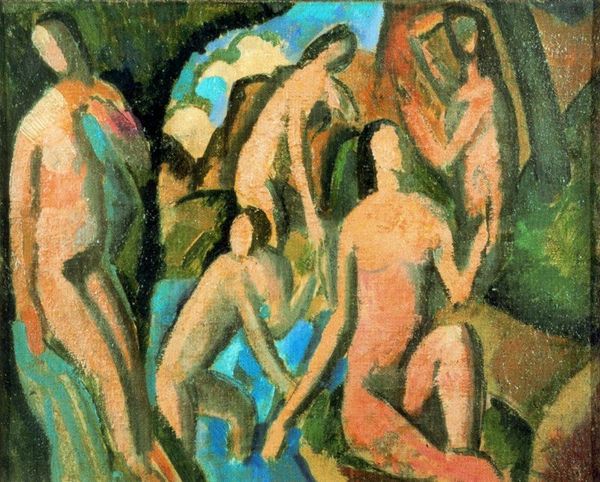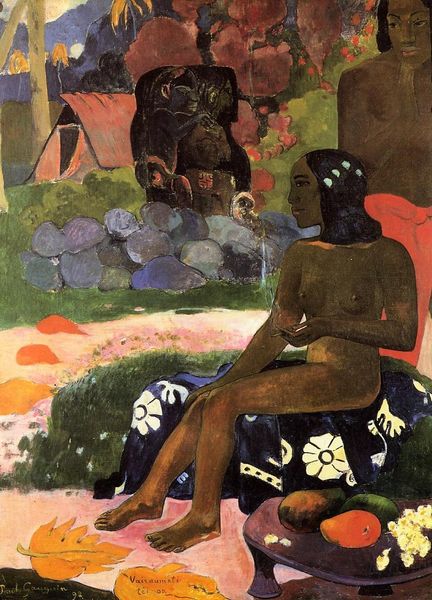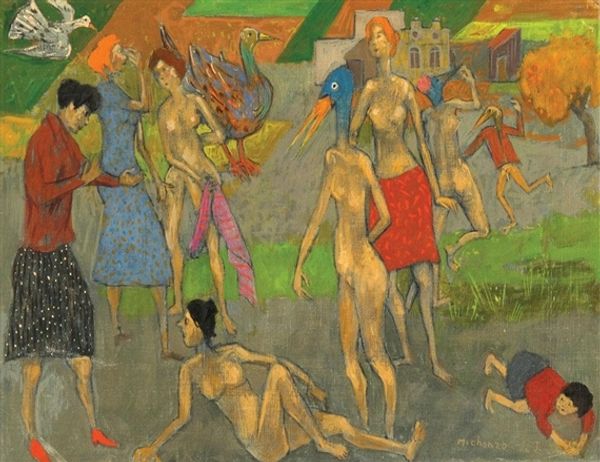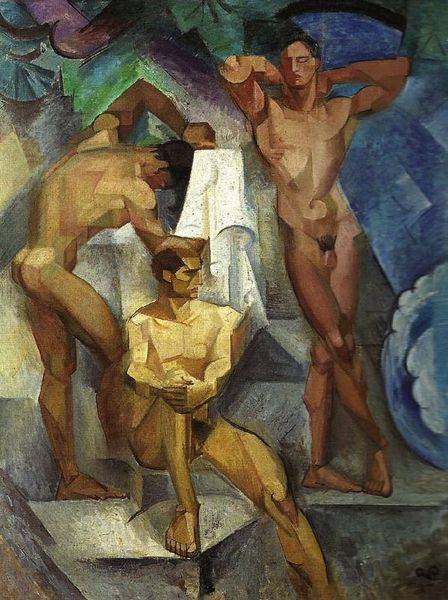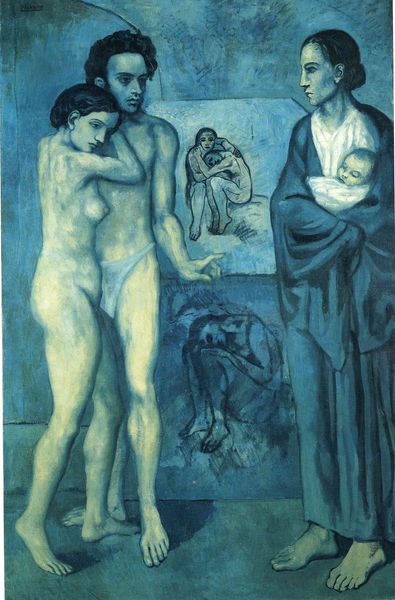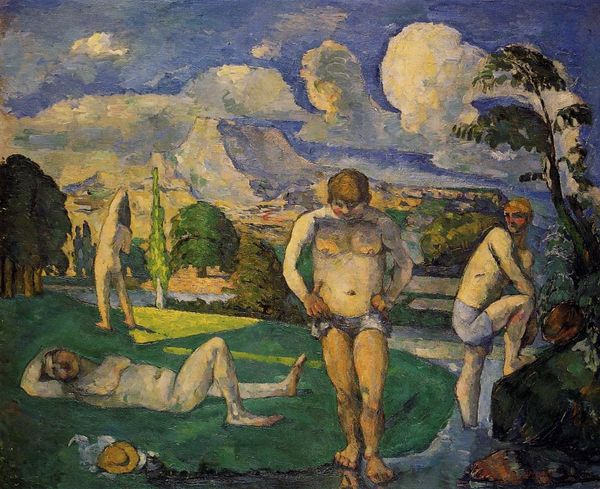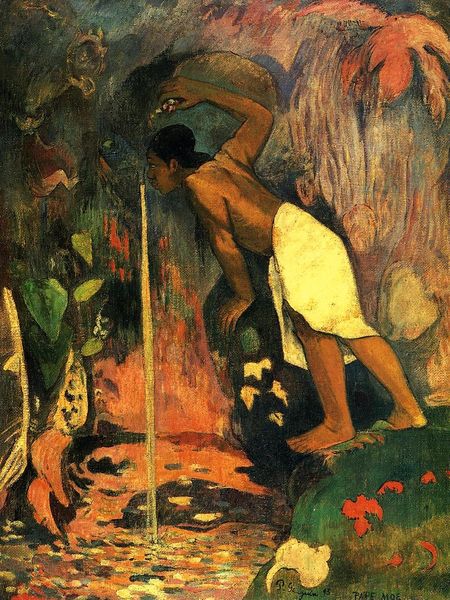
Where Do We Come From? What Are We? Where Are We Going? 1898
0:00
0:00
paulgauguin
Museum of Fine Arts (MFA), Boston, MA, US
painting, oil-paint
#
allegories
#
allegory
#
narrative-art
#
symbol
#
painting
#
oil-paint
#
landscape
#
figuration
#
handmade artwork painting
#
orientalism
#
mythology
#
symbolism
#
painting art
#
history-painting
#
post-impressionism
#
nude
Dimensions: 139.1 x 374.6 cm
Copyright: Public domain
Curator: Let's consider Paul Gauguin's monumental oil on canvas from 1898, held here at the Museum of Fine Arts, Boston, titled *Where Do We Come From? What Are We? Where Are We Going?* Editor: My immediate response is bewilderment. It's like glimpsing a lost paradise, but tinged with a profound sense of questioning and maybe even a touch of melancholy. The scale is remarkable, commanding your full attention. Curator: Absolutely. It's essential to remember Gauguin's context. He created this in Tahiti, during a period of intense personal turmoil. The materiality of the canvas, the layers of oil paint meticulously applied, were literally born from that experience. His attempt to reject the West can be read in the way he synthesizes form, abandoning Western modes of production. Editor: The visual language is captivating, isn't it? That central figure reaching for the fruit… it echoes the fall of man in Christian iconography. But the surrounding figures, the Tahitian women, the animals, the statue of what looks like a Polynesian deity... They're interwoven in a symbolic tapestry that invites endless interpretations. I read it as less a paradise found, and more paradise questioned. Curator: It's easy to romanticize his Tahitian period, but examining the sourcing of his pigments, the transportation of such a large canvas – it reveals a complicated relationship with colonialism and his role within it. This wasn't a complete escape; instead it's evidence of complex material dependencies. Editor: That’s a good point. Despite those considerations, the overall effect is a timeless contemplation of existence. We can read familiar themes—birth, life, death— through a completely original arrangement of visual symbols. Look at that old woman at the left side. To me, she represents anguish. Gauguin’s attempt at capturing paradise remains heavily filtered, perhaps due to her perspective. Curator: And isn't that telling? Despite any symbolic analysis, we can consider this a cultural artifact: an imported canvas, and extracted materials shipped for a man looking to create what he believed was a pristine scene. Editor: A scene deeply shaped by a sense of universal mystery and the visual symbols he uses to explore that sense of wonder. Thank you, I am left contemplating life’s trajectory through my new visual lens. Curator: The intersection of those material realities and symbolic meanings gives a profound look into what drives all creative endeavor.
Comments
No comments
Be the first to comment and join the conversation on the ultimate creative platform.
